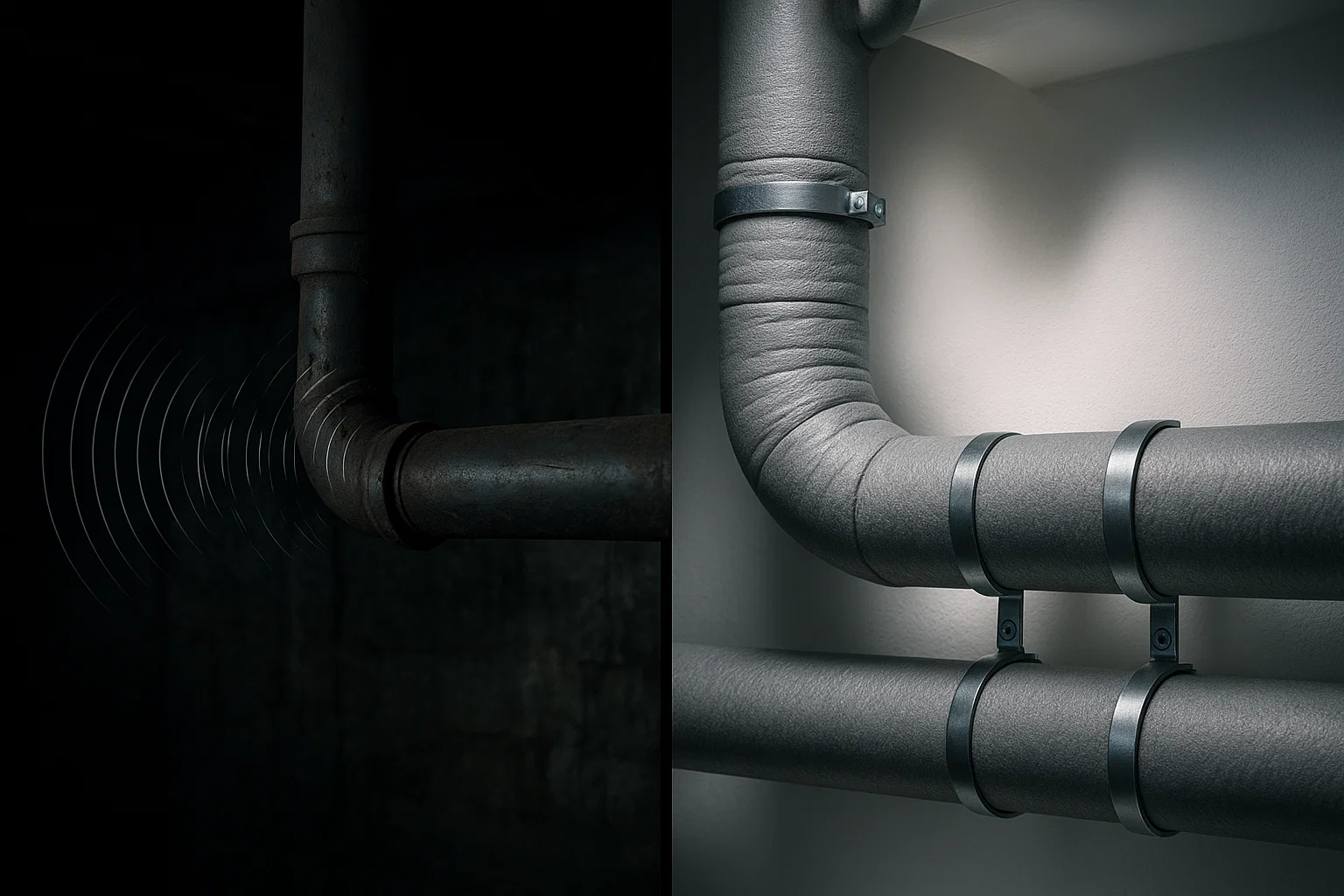
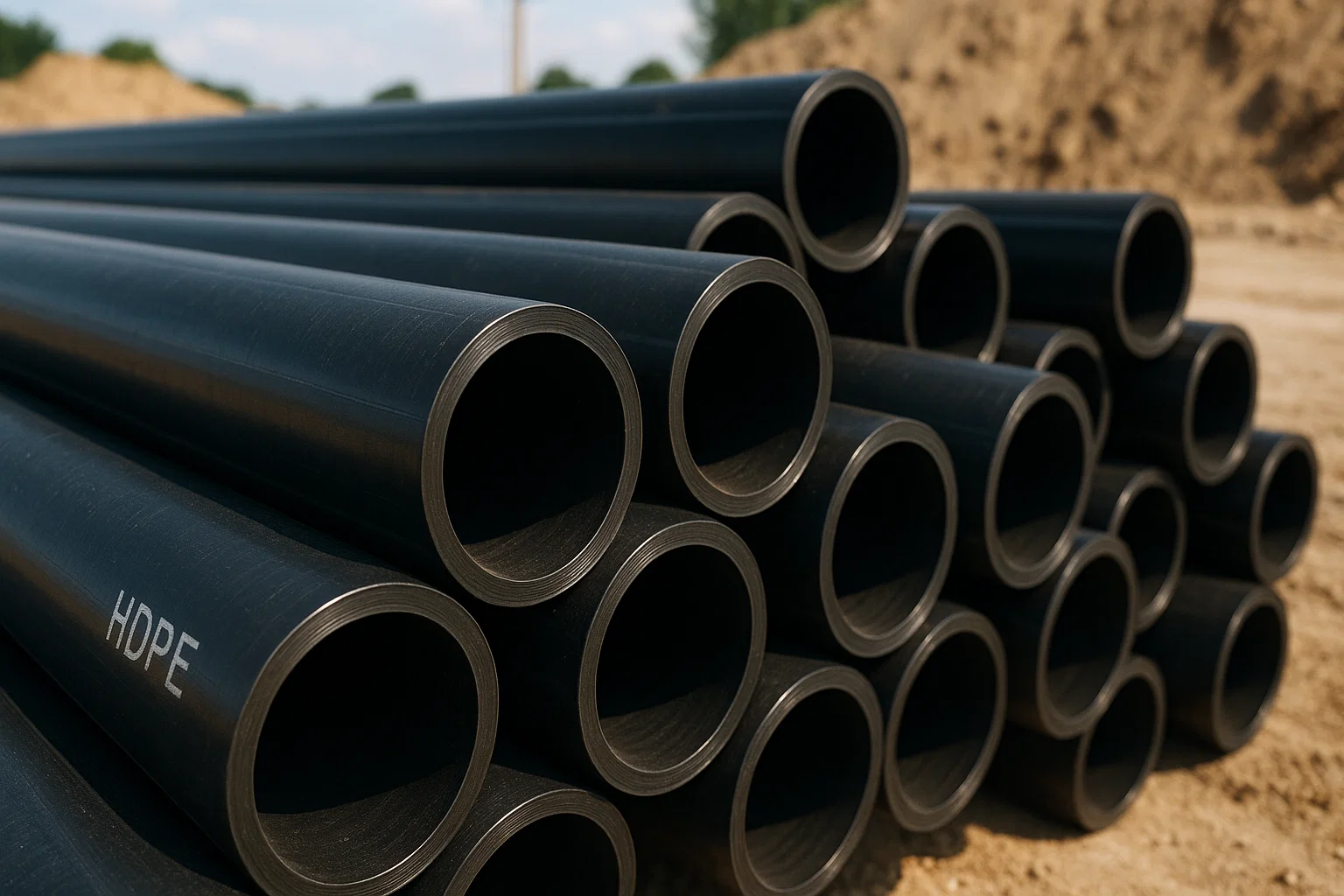
Are you struggling to find the right piping material for your water management project? The consequences of choosing the wrong pipe material can be severe—leaks, contamination, and costly replacements that drain your budget and time. HDPE pipes offer a solution that combines durability, flexibility, and cost-effectiveness for various applications from potable water to industrial fluid transport.
In this comprehensive guide, we’ll explore everything you need to know about HDPE pipes, including their properties, applications, installation methods, and why they might be the perfect solution for your next project.

HDPE pipe, or High-Density Polyethylene pipe, is a flexible, durable piping solution made from thermoplastic polyethylene. Distinguished by its high strength-to-density ratio, HDPE has revolutionized the piping industry since its commercial introduction in the 1950s. Today, it’s one of the most widely used plastic piping materials globally.
HDPE is created through the polymerization of ethylene, resulting in a material with a higher density (typically 0.941-0.965 g/cm³) than other polyethylene types. This higher density gives the pipe its exceptional strength and durability while maintaining flexibility—traits that make it ideal for various demanding applications.
One of the defining features of HDPE pipe is its molecular structure. The long chains of ethylene monomers create a highly crystalline structure with minimal branching, contributing to the material’s superior strength and chemical resistance. Unlike PVC pipes, which are rigid and contain chlorine, HDPE pipes offer more flexibility and are free from chlorine, making them environmentally friendlier.
HDPE pipes are available in various pressure ratings, with PN10 and PN16 being among the common classifications indicating their pressure handling capabilities.

Understanding the unique properties of HDPE pipes helps explain why they’ve become increasingly popular in water management solutions and various other applications:
HDPE pipes boast remarkable strength-to-weight ratios, making them capable of withstanding significant external loads and internal pressures. They’re resistant to:
This durability translates to a service life of 50-100 years when properly installed and maintained, significantly outlasting many traditional piping materials.
HDPE’s chemical structure renders it highly resistant to a wide range of chemicals, acids, bases, and corrosive substances. Unlike metal pipes that can corrode or concrete pipes that can deteriorate when exposed to certain chemicals, HDPE maintains its integrity in harsh chemical environments.
The flexibility of HDPE pipes is a major advantage in areas prone to ground movement, earthquakes, or soil settling. While rigid pipes like UPVC and CPVC might crack under such stress, HDPE pipes can flex and absorb movement without damage.
HDPE pipes perform well across a broad temperature range (typically -40°C to 60°C for standard grades). This temperature resilience makes them suitable for various climates and applications, though they’re not typically used for hot water supply like PPR pipes.
The exceptionally smooth interior surface of HDPE pipes results in:
HDPE pipes can be joined through heat fusion methods that create a monolithic, leak-free system. This fusion process results in joints that are actually stronger than the pipe itself, eliminating the common failure points found in mechanical joints used with other piping materials.
While not inherently UV resistant, HDPE pipes can be manufactured with carbon black or other UV stabilizers to provide protection against ultraviolet degradation when used in above-ground applications.

HDPE pipes are categorized based on several classification systems:
PE100 represents the highest grade with superior pressure resistance and strength.
HDPE pipes are classified by their pressure ratings, typically expressed as PN (Nominal Pressure) values in bars:
The difference between PN10 and PN16 pipes is significant when selecting the right pipe for your application, with PN16 being suitable for higher pressure requirements.

HDPE pipes are available in a wide range of sizes to accommodate various applications. Understanding the sizing conventions is crucial when specifying HDPE pipes for projects.
HDPE pipes are typically specified by their outside diameter (OD) and wall thickness, which determines their pressure rating. Common diameter ranges include:
The wall thickness is determined by the Standard Dimension Ratio (SDR), which is the ratio of the pipe’s outer diameter to its wall thickness:
SDR = Outside Diameter ÷ Wall Thickness
Common SDR values include SDR11, SDR17, and SDR21, with lower SDR numbers indicating thicker walls and higher pressure capabilities.
HDPE pipes are manufactured according to various international standards:
These standards ensure consistency in manufacturing, performance, and compatibility across different systems and countries.
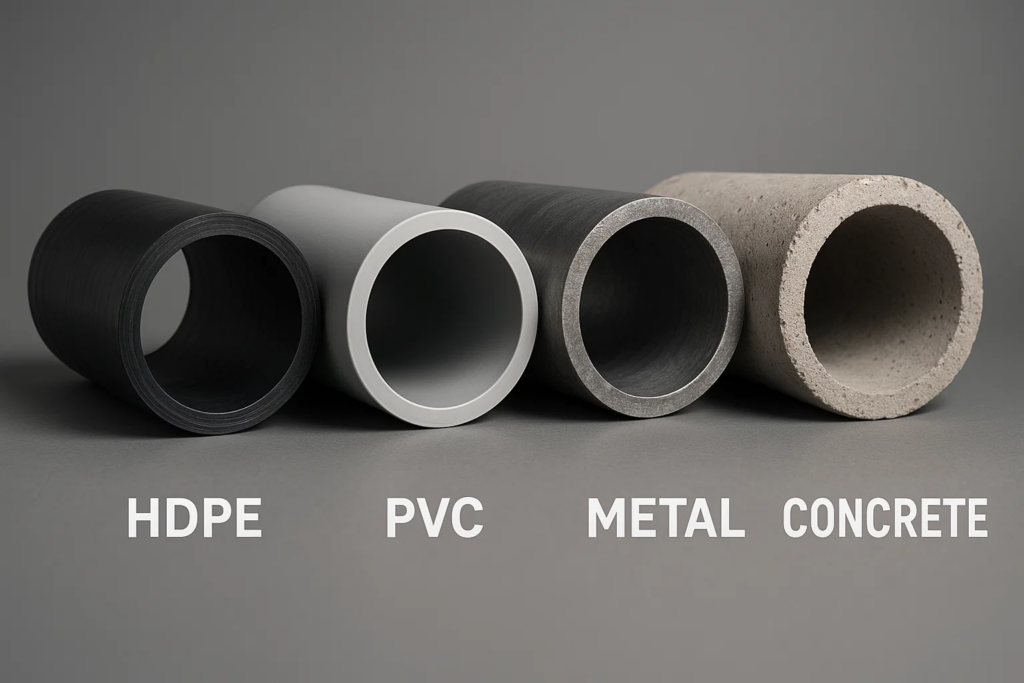
When comparing HDPE to other common piping materials, several advantages become apparent:
While both are plastics, HDPE offers greater flexibility, impact resistance, and temperature range compared to PVC pipes. HDPE is also free from chlorine, making it more environmentally friendly. However, PVC is generally more rigid and sometimes easier to work with in certain applications.
For situations requiring higher pressure handling, PVC high pressure valves and PVC HP pipes are available, though HDPE still maintains advantages in flexibility and longevity.
Unlike metal pipes, HDPE is:
Metal pipes often have higher temperature resistance and strength but come with higher material and installation costs. When deciding between PVC valves vs metal valves, similar considerations apply.
HDPE offers:
Concrete pipes provide excellent crush resistance but are prone to chemical attack, particularly from acidic conditions, and are much more challenging to install due to their weight.
PPR pipes are primarily used for hot water applications due to their temperature resistance, while HDPE excels in cold water, drainage, and outdoor applications. For those wondering which is better, PPR pipe or PVC pipe, it depends largely on the application, with PPR being preferred for hot water systems.
While HDPE is an excellent choice for drainage applications, there are various types of drainage pipes available. HDPE’s flexibility, chemical resistance, and smooth interior make it ideal for many drainage scenarios.

The versatility of HDPE pipes makes them suitable for numerous applications:
HDPE pipes are extensively used in municipal and residential water supply networks due to their:
They’re particularly valuable for home plumbing in areas with corrosive soil or water conditions.
The chemical resistance and leak-free joints of HDPE make it ideal for:
As a leading drainage pipes supplier in Dubai, we provide high-quality HDPE solutions for all drainage needs.
HDPE’s chemical resistance and leak-free joints have made it the preferred material for natural gas distribution networks globally.
HDPE pipes are extensively used in irrigation systems due to:
For those looking to choose the best pipe material for irrigation systems, HDPE is often a top contender, particularly for mainlines and sub-mains in different types of irrigation systems including drip irrigation.
HDPE pipes are employed in various industrial settings for:
Their chemical resistance makes them particularly valuable in the oil and gas industry.
HDPE’s buoyancy, corrosion resistance, and durability make it suitable for:
The chemical and abrasion resistance of HDPE makes it ideal for:
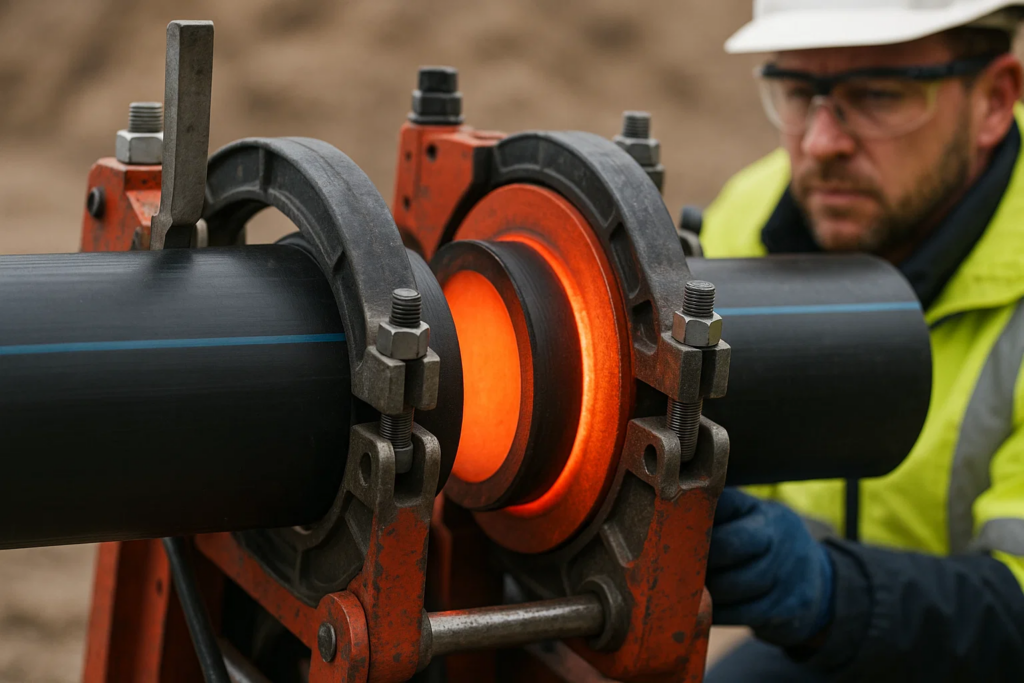
HDPE pipes offer various installation methods, each with its own advantages:
The most common method for joining larger diameter HDPE pipes involves:
This creates a joint as strong as the pipe itself with no leak points.
This method uses electrical resistance to heat and fuse HDPE pipes:
For smaller diameter pipes:
For connecting HDPE to other materials or for temporary connections:
HDPE’s flexibility and durability make it ideal for:
These methods can significantly reduce disruption, particularly in urban areas or when crossing obstacles like roads or waterways.
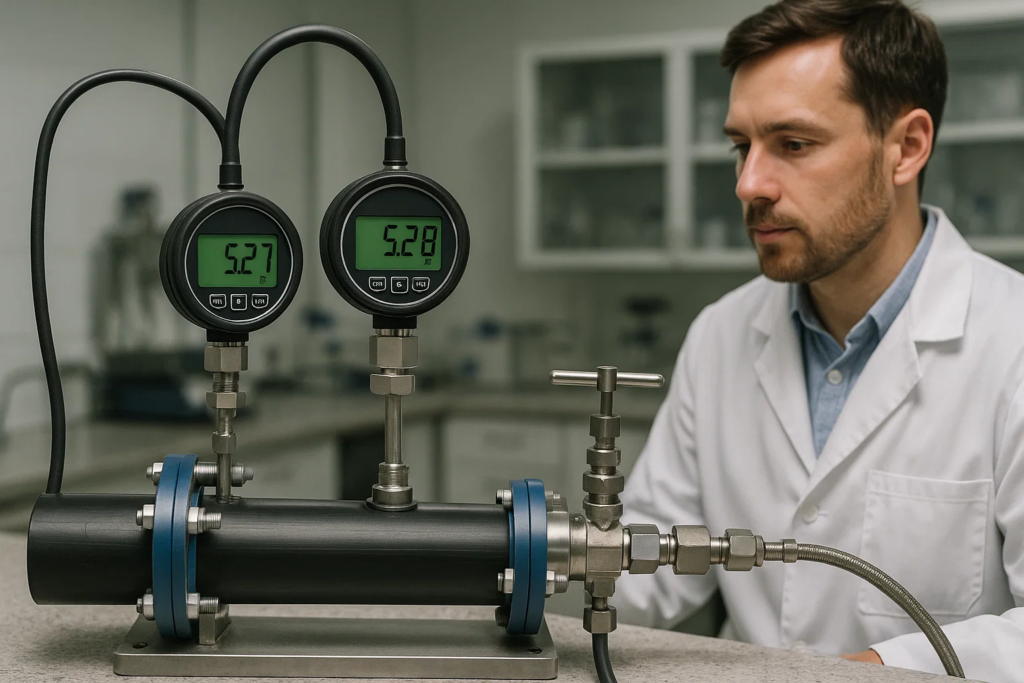
Quality assurance for HDPE pipes involves several testing methods:
To check PVC pipe quality, similar principles apply, though the specific tests may differ.
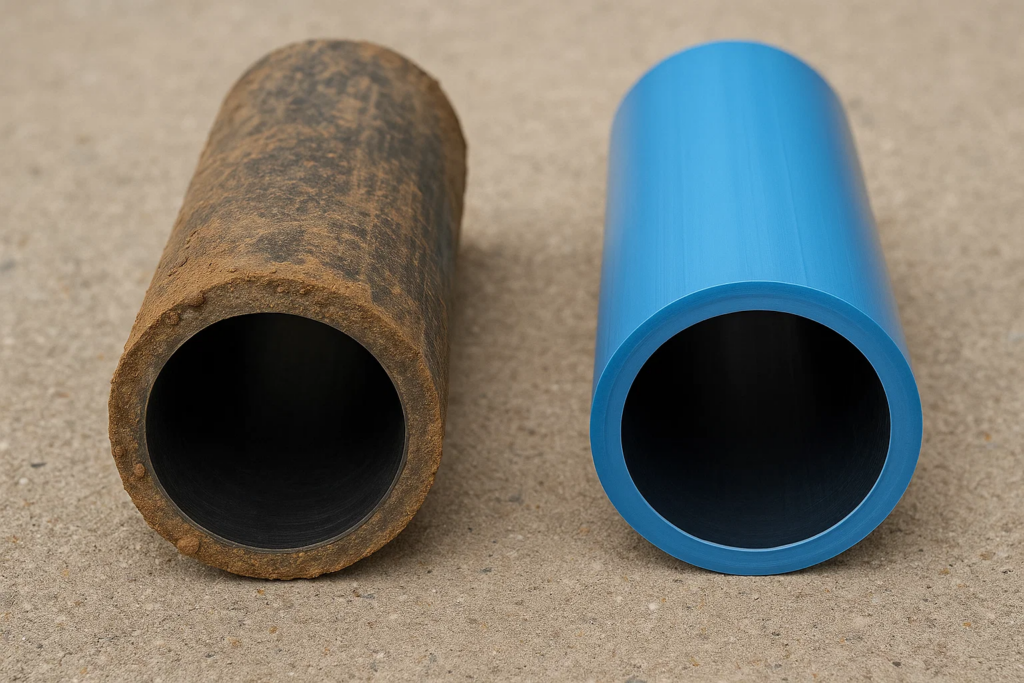
One of HDPE’s greatest advantages is its minimal maintenance requirements:
Properly installed HDPE piping systems typically last 50-100 years, with manufacturers often providing 50-year warranties. This long lifespan is attributed to:
While HDPE requires minimal maintenance, best practices include:
If damage does occur, HDPE pipes can be repaired through:
Unlike finding broken pipes underground or repairing PPR pipe leaks, HDPE repairs are often simpler due to the material’s weldability.
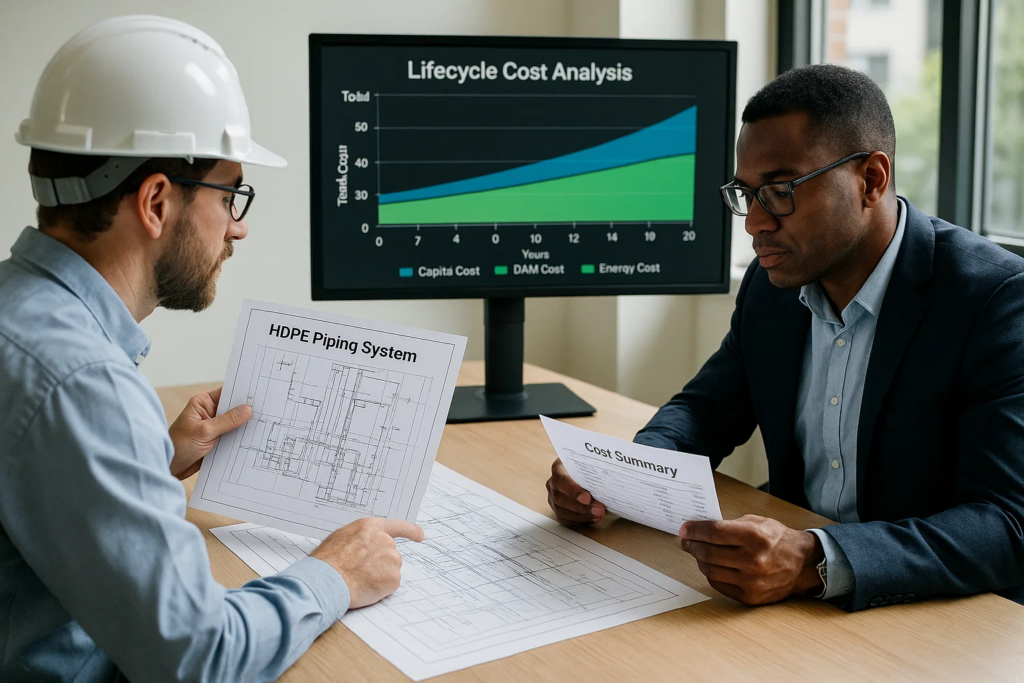
When evaluating HDPE pipes for a project, consider these cost factors:
When properly analyzed on a lifecycle basis, HDPE often represents the most economical option despite potentially higher upfront costs compared to some alternatives.
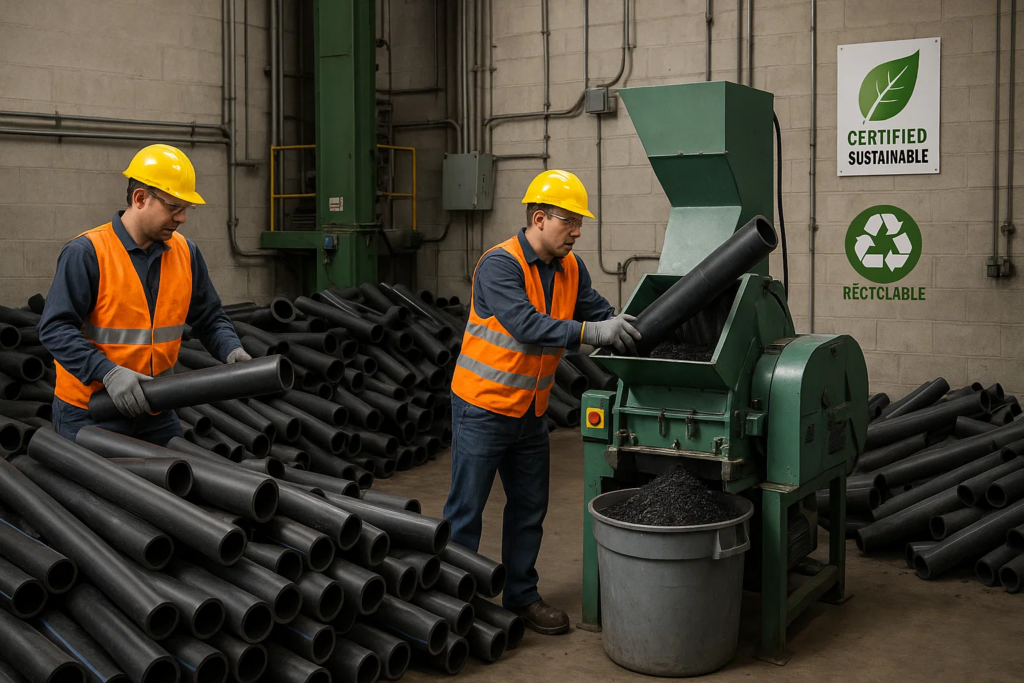
As environmental considerations become increasingly important, HDPE pipes offer several sustainability advantages:
When HDPE pipes reach the end of their service life:
HDPE pipes are distinguished by their higher density, greater flexibility, and superior strength compared to many other plastic pipes. Their molecular structure provides enhanced chemical resistance, impact strength, and temperature performance compared to pipes like PVC or CPVC.
When properly installed and maintained, HDPE pipes typically have a service life of 50-100 years. Many manufacturers provide 50-year warranties, reflecting confidence in the material’s longevity.
Standard HDPE pipes are not recommended for continuous hot water applications above 60°C. For hot water systems, PPR pipes or PE-RT (Polyethylene of Raised Temperature) pipes are more suitable alternatives.
Yes, HDPE pipes manufactured to potable water standards are safe for drinking water applications. They do not impart taste or odor to water and are resistant to bacterial growth. Look for pipes that comply with NSF/ANSI Standard 61 or equivalent local standards.
HDPE pipes are typically joined through heat fusion methods including butt fusion, socket fusion, or electrofusion, creating leak-free monolithic joints. Mechanical fittings are also available for transitions or temporary connections.
Yes, HDPE pipes are excellent for underground installations due to their flexibility, corrosion resistance, and ability to withstand ground movement. They’re commonly used for underground water mains, sewer lines, and gas distribution.
HDPE pipes are available in various pressure ratings, typically from PN2.5 to PN25, with specialized high-pressure variants available for specific applications. The pressure rating depends on the pipe’s SDR (Standard Dimension Ratio) and PE grade (PE63, PE80, or PE100).
Selection factors include the application (water, gas, drainage), required pressure rating, temperature conditions, chemical exposure, installation method, and local regulatory requirements. Consulting with a specialist from a reputable HDPE pipes and fittings supplier is recommended for complex projects.
Yes, HDPE pipes perform well in freezing temperatures due to their flexibility and impact resistance. They can expand to accommodate freezing water and return to their original shape upon thawing, often without damage.
Yes, color coding helps identify pipe applications: blue or blue-striped black for potable water, yellow or yellow-striped black for gas, black for general purposes or wastewater, and green-striped black often used for sewer applications. Regional variations exist, so check local standards.
Yes, HDPE pipes are 100% recyclable at the end of their service life. The recycled material can be used in new pipe production or other HDPE products.
For those wondering how to increase water pressure in pipes, HDPE systems benefit from their smooth interior, minimizing pressure losses due to friction. Proper sizing, minimizing bends, and appropriate pump selection are key factors.
HDPE pipes represent one of the most versatile, durable, and cost-effective piping solutions available today. Their unique combination of strength, flexibility, chemical resistance, and longevity makes them ideal for a wide range of applications from municipal water supply to industrial fluid transport.
As a leading HDPE pipes and fittings supplier in Dubai, we’ve seen firsthand how these remarkable pipes solve complex water management challenges across various industries and applications.
Whether you’re planning a major infrastructure project, an irrigation system, or a home plumbing upgrade, HDPE pipes deserve serious consideration for their performance, longevity, and environmental benefits. Their higher initial cost is often quickly offset by reduced installation complexity, minimal maintenance requirements, and exceptional service life.
For expert advice on selecting the right HDPE piping solution for your specific needs, contact our experienced team today. We provide comprehensive support from material selection to installation guidance, ensuring your project’s success from start to finish.